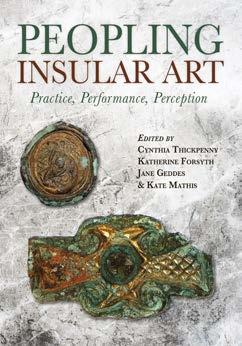
9 minute read
ARCHAEOLOGICAL METHOD & THEORY
The Art of Siege Warfare and Military Architecture from the Classical World to the Middle Ages
Edited by Michael Eisenberg and Rabei Khamisy
Advertisement
Oxbow Books• 97817892540386 Hardback• 288 pages September 2020• £45.00 Ceramics, Cuisine and Culture
Edited by Michela Spataro and Alexandra Villings Studies on technological and socio-economic aspects of ceramic kitchen ware, cuisine and cooking.
Oxbow Books • 9781789253412 New in Paperback• 288 pages Available Now• £38.00
Art in the Archaeological Imagination
Edited by Dragos Gheorghiu
Explores the archaeological imagination as a type of artistic creation.
Oxbow Books • 9781789253528 Paperback• 140 pages Available Now• £36.00 Dying to Eat
Edited by Candi K. Cann First interdisciplinary book to explore the role of food in death, bereavement, and the afterlife.
University Press of Kentucky 9780813178516• Paperback 208 pages• Available Now £26.50 Death and Changing Rituals
Edited by J. Rasmus Brandt, Håkon Roland and Marina Prusac
Explores how funerary rituals changed and the meaning behind these changes.
Oxbow Books • 9781789253818 New in Paperback• 476 pages
Available Now• £35.00
Animo Decipiendi?
Edited by Antonio Guzmán and Javier Martínez
New approaches to fakes and
forgeries in the past.
Barkhuis • 9789492444813 Hardback• 335 pages Available Now• £85.50
Practice, Performance, Perception Edited by Cynthia Thickpenny, Katherine Forsyth, Jane Geddes and Kate Matthis Focuses on early medieval illuminators, pattern-makers, rubricators, carvers, and casters.
These papers interpret the theme of those in early medieval Ireland and Britain who commissioned, created, and engaged with Insular art objects, and how they conceptualised, fashioned, and experienced them. They demonstrate the intellectual vibrancy of Insular art studies, its international outlook, its interdisciplinarity, and its openness to innovative technologies and approaches, while at the same time demonstrating the strength and enduring value of established methodologies and research practices.
Oxbow Books • 9781789254549 • Paperback • b/w and colour illus. 280 x 216mm • 224 pages • July 2020 • £38.00
EBOOK AVAILABLE
'A Pencil Will Do, Thank You’
25 Years of Archaeological Reconstructions By Martin Hense Martin Hense’s detailed and colorful reconstructions and archaeological drawings.

Martin Hense has been travelling to North Africa and West Asia to excavate and draw for more than 25 years. This book presents his reconstructions and archaeological drawings from various excavations with full colour illustrations. Reconstructing ancient ruins, with detailed knowledge of ancient architecture and building technology, he has become an expert over the years.
Blikvelduitgevers Publishers • 9789080774407 • Paperback • colour illus. 200 x 170mm • 64 pages • June 2020 • £17.00
The Gilgamesh Epos in Pictures
By Hugo de Reede A pictorial re-telling of the account of Gilgamesh by archaeological illustrator Hugo de Reede.

Hugo de Reede (1929–2019), artist and archaeological illustrator, worked in Syria for many years. Gripped by the Gilgamesh Epos and the philosophy narrated in the epic, he created a pictorial book, retelling the account of Gilgamesh and the eternal mystery of death. The style of drawing in the book suits the regional art in a remarkable manner and with a humorous touch that is fitting for the region’s storytelling tradition.
EBOOK AVAILABLE
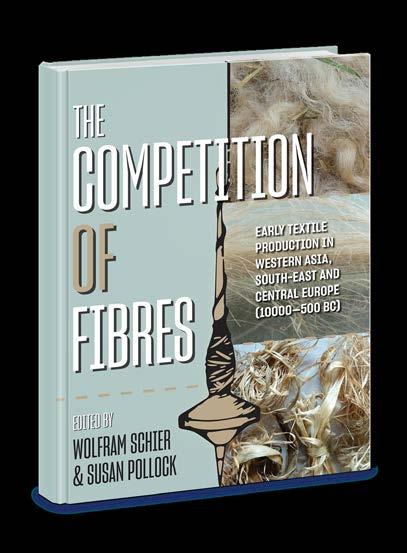
Oxbow Books • 9781789254297 Paperback • b/w illus. • 280 x 216 mm 232 pages • Available Now • £38.00
About the editors:
Wolfram Schier is Professor of Prehistoric Archaeology at Freie Universität Berlin. Prior to that he held positions as Assistant Professor at Heidelberg University and as Professor at the universities of Bamberg and Würzburg. Susan Pollock is professor at the Institut für Vorderasiatische Archäologie at the Freie Universität Berlin. Prior to that she was Professor in the Department of Anthropology, Binghamton University, Binghamton, NY.
The Competition of Fibres
Early Textile Production in Western Asia, South-east and Central Europe (10,000–500 BC) Edited by Wolfram Schier and Susan Pollock Series: Ancient Textiles Series
A collections of papers on the study of wool and other fibres in ancient textile production.
The central issues discussed in this new collected work in the highly successful Ancient Textiles Series are the relationships between fibre resources and availability on the one hand and the ways those resources were exploited to produce textiles on the other. Technological and economic practices – for example, the strategies by which raw materials were acquired and prepared – in the production of textiles play a major role in the papers collected here.
Contributions investigate the beginnings of wool use in western Asia and south-eastern Europe. The importance of wool in considerations of early textiles is due to at least two factors. First, both wild as well as some domesticated sheep are characterised by a hairy rather than a woolly coat. This raises the question of when and where woolly sheep emerged, a question that has not up until now been resolvable by genetic or other biological analyses. Second, wool as a fibre has played a major role both economically and socially in both western Asian and European societies from as early as the 3rd millennium BC in Mesopotamia, and it continues to do so, in different ways, up to the modern day. Despite the importance of wool as a fibre resource, contributors demonstrate clearly that its development and use can only be properly addressed in the context of a consideration of other fibres, both plant and animal.
9781789255515 £29.95 Oxbow Books 9781789251203 £35.00 Oxbow Books
Scandinavian Late Iron Age Costume Iconography By Ulla Mannering Series: Ancient Textiles Series
A study of iconographic material from the Scandinavian Late Iron Age depicting clothed human figures.
This richly illustrated book presents a selection of the rich and varied iconographic material from the Scandinavian Late Iron Age (AD 400–1050) depicting clothed human figures, from an archaeological textile and clothing perspective. The source material consists of five object categories: gold foils, gold bracteates, helmet plaques, jewellery, and textile. The book contributes with new information on social, regional and chronological differences in clothing traditions from c. AD 400 to the Viking Age.
Oxbow Books • 9781789255478 • New in Paperback 280 x 216mm • 288 pages • August 2020 • £27.50
The Dyer's Handbook
Memoirs of an 18th-Century Master Colourist By Dominique Cardon Series: Ancient Textiles Series
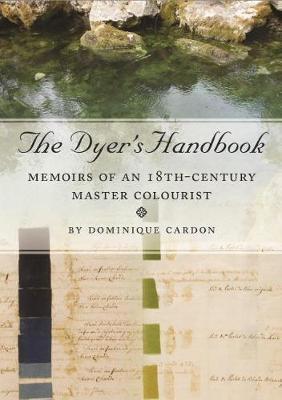
Translation and facsimile reproduction of an 18th-century French manuscript on producing textile dyes.
The Dyer's Handbook concerns a unique manuscript from the 18th century: a dyer’s memoirs from Languedoc, containing recipes for dyes with corresponding colour samples. It is an exceptional document, hugely rare and of great significance not only to textile historians but dyers and colourists today, as thanks to the information in the manuscript the colours can be reproduced exactly, with the same ingredients or reproduced using modern techniques by matching the colour samples.
Oxbow Books • 9781789255492 • New in Paperback 297 x 210mm • 160 pages • October 2020 • £29.95
Silk
Trade and Exchange along the Silk Roads between Rome and China in Antiquity Edited by Berit Hildebrandt Series: Ancient Textiles Series

Multi-disciplinary approaches to the manufacture, trade and status of silk along the Silk Roads.
These papers bring together historical, philological and archaeological research to highlight the use, circulation and meaning of silk as a commodity, gift, tribute, booty and status symbol in varying cultural and chronological contexts between East and West, including technological aspects of silk production.
A Study of Monetary Circulation in the Late Fourth an Early Third Centuries BC: Southern Levant
By Haim Gitler and Oren Tal Series: Numismatic Notes and Monographs
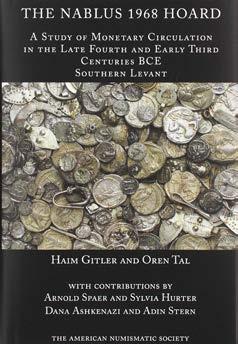
The Nablus 1968 Hoard is the largest late Persian/early Hellenistic period coin and jewellery hoard recorded from the southern Levant. It provides a detailed catalogue, discussion of the hoard and its context, its burial date, a synopsis of the history and archaeology of the Persian period province of Samaria, and a discussion on the hoard’s various coins. There are also two appendices, one presenting a method for determining dies links and the second offering a glossary of relevant terms.
American Numismatic Society • 9780897223607 • Hardback illus. • 229 x 152mm • 209 pages • Available Now • £60.00
Connections, Communities, and Coinage
The System of Coin Production in Southern Asia Minor, AD 218–276 By George C. Watson Series: Numismatic Studies
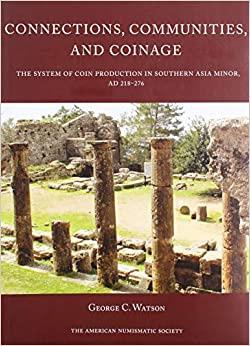
Addresses the systems of coin production in Pamphylia, Pisidia and Cilicia during the 3rd century AD.
This book aims to address coin production in the regions of Pamphylia, Pisidia and Cilicia during the 3rd century AD, where cities produced their own bronze coinage with some collaboration. Following Konrad Kraft’s Das System der kaiserzeitlichen Münzprägung in Kleinasien, the most comprehensive study of these phenomena to date, it examines these questions in an area unexplored by Kraft, as well as reappraising his conclusions and opening up new avenues of investigation.
American Numismatic Society • 9780897223584 • Hardback 280 x 216mm • 620 pages • Available Now • £75.00
The Man, Monuments, and Medals By Michael Ross Series: Studies in Medallic Art
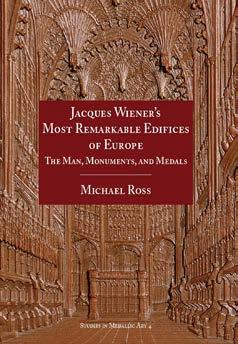
Examines the 19th-century medal series The Most Remarkable Edifices of Europe and its author.
The 19th-century medal series The Greatest Edifices of Europe by Belgian engravermedalist Jacques Wiener is examined in detail in this book. It begins by providing a biographical background for Wiener, integrating two primary, existing sources, supplemented by information from Wiener's family descendants. The overall medal series is then addressed, starting with its inception as defined in Wiener’s original 1853 prospectus through its quietly incomplete conclusion.
The Iconography of the Golden Age Myth on Roman Imperial Coinage of the Third Century AD By Graham Barker, Richard Abdy and Sam Moorhead Explores the iconography of the Golden Age Myth on Roman Imperial coinage of the 3rd Century AD.
This fascinating study of the iconography of the Golden Age Myth on Roman Imperial coinage of the 3rd Century AD also includes all Roman coins that have the Saecular Games types, down to AD 300. The first study of its kind, it also gives a reconstruction of the Games and appendices with texts from well-known classical authors.
Spink Books • 9781912667475 • Hardback • 152 x 240mm 160 pages • September 2020 • £30.00
The Coins of Scotland, Ireland and the Islands
Edited by Emma Howard A new and updated edition of a standard reference catalogue.
The fourth edition of this standard reference catalogue has been fully updated, with a revised section on the AngloGallic coinage – namely those coins struck in France by the kings and princes of England between 1154 and 1453 –with new information and current prices throughout. It is the essential guide for any collector in this fascinating area of British coinage.
Spink Books • 9781912667482 • Hardback 216 x 138mm • 304 pages • September 2020 • £45.00
English Silver Coinage
By Maurice Bull A new 7th edition of the standard work on English silver coinage.
This indispensable guide to English silver coinage is truly the essential handbook for any collector of English silver coinage. It is a record of the major and many minor recognised types and die-varieties of English silver coins. This new 7th edition offers an update to the previous volume, with new varieties, corrections and current prices. The arrangement is by monarch rather than denomination, and all Bull reference numbers are cross-referenced to the 5th edition.







